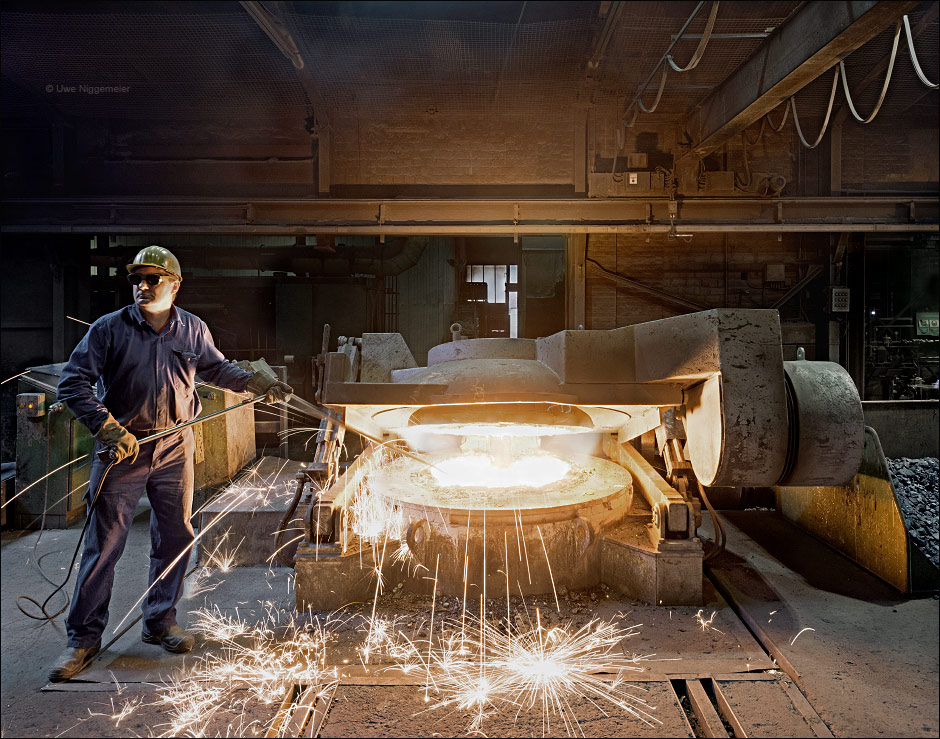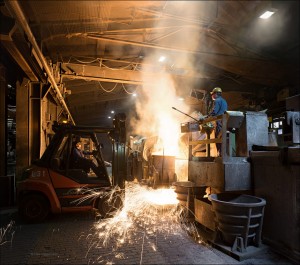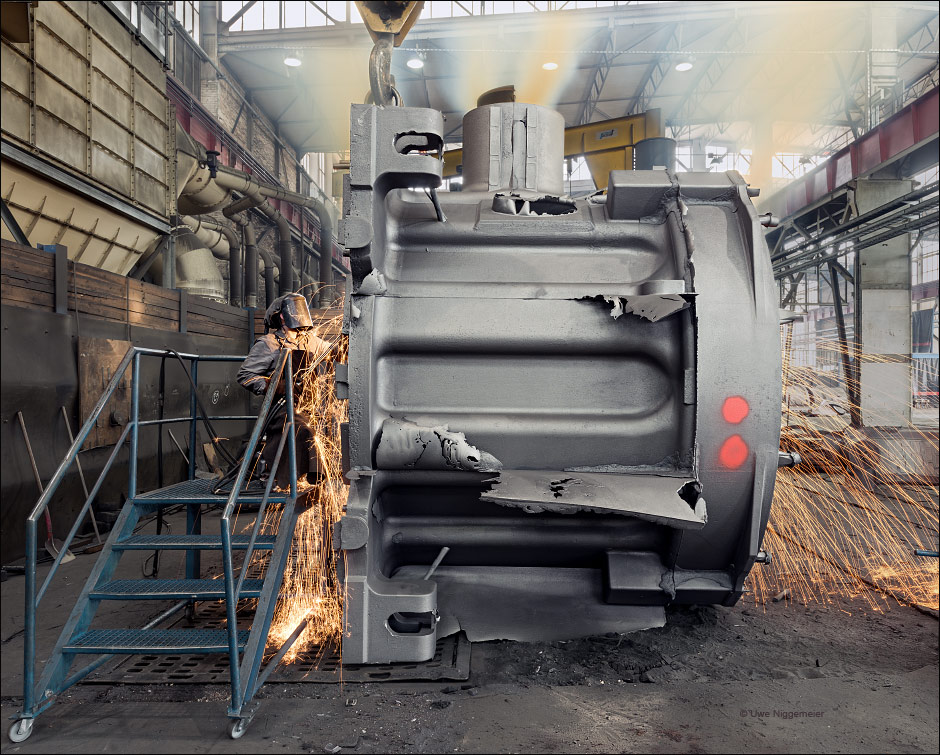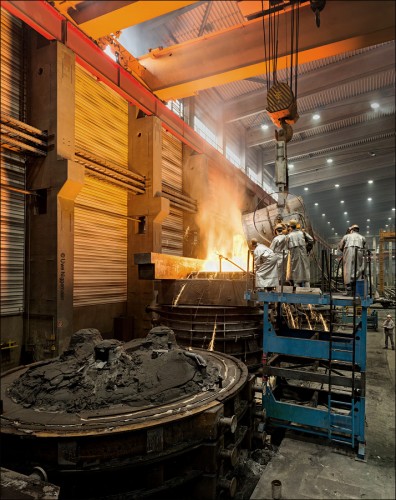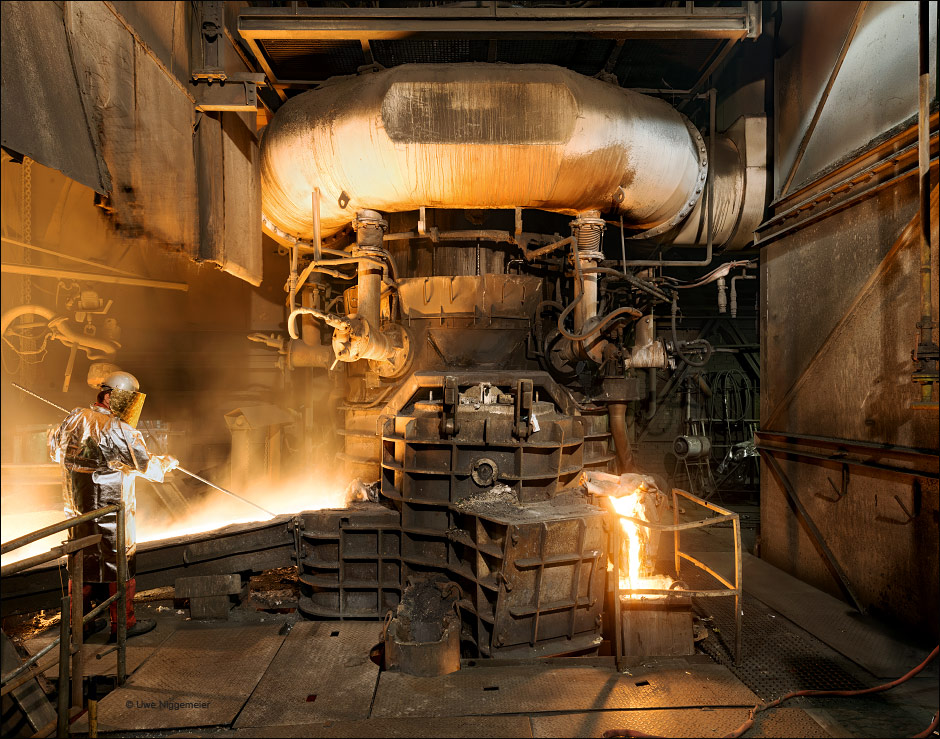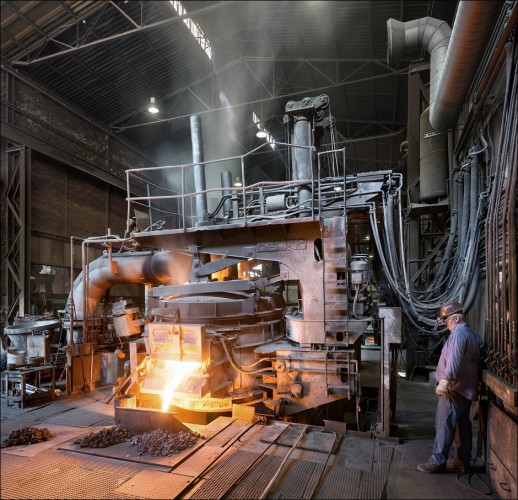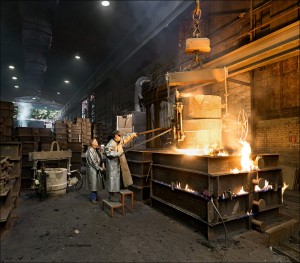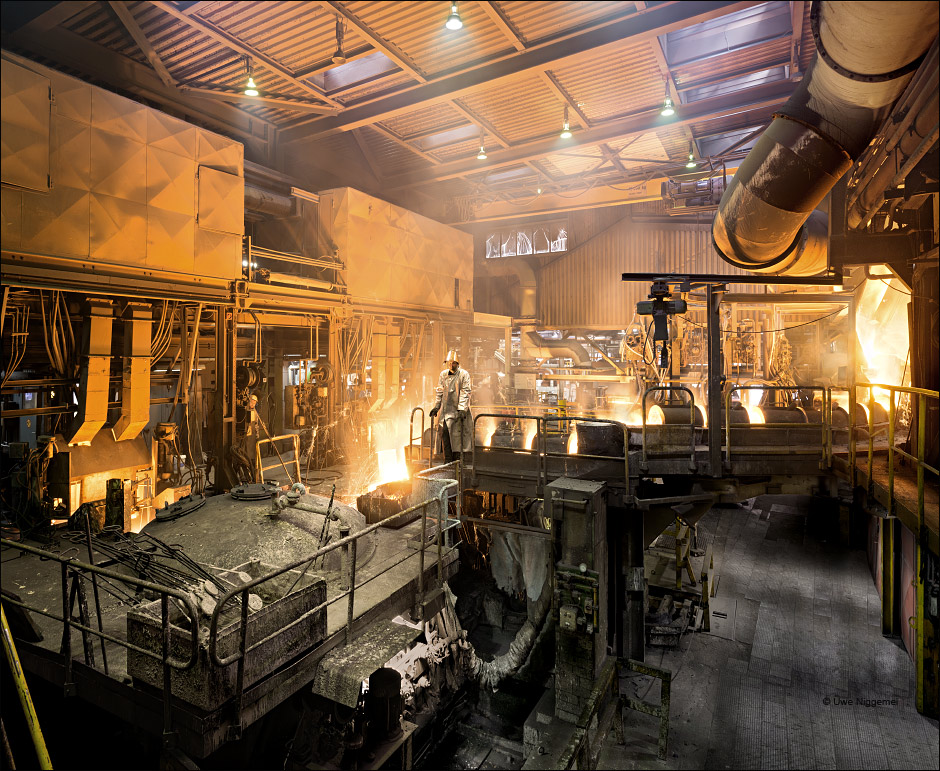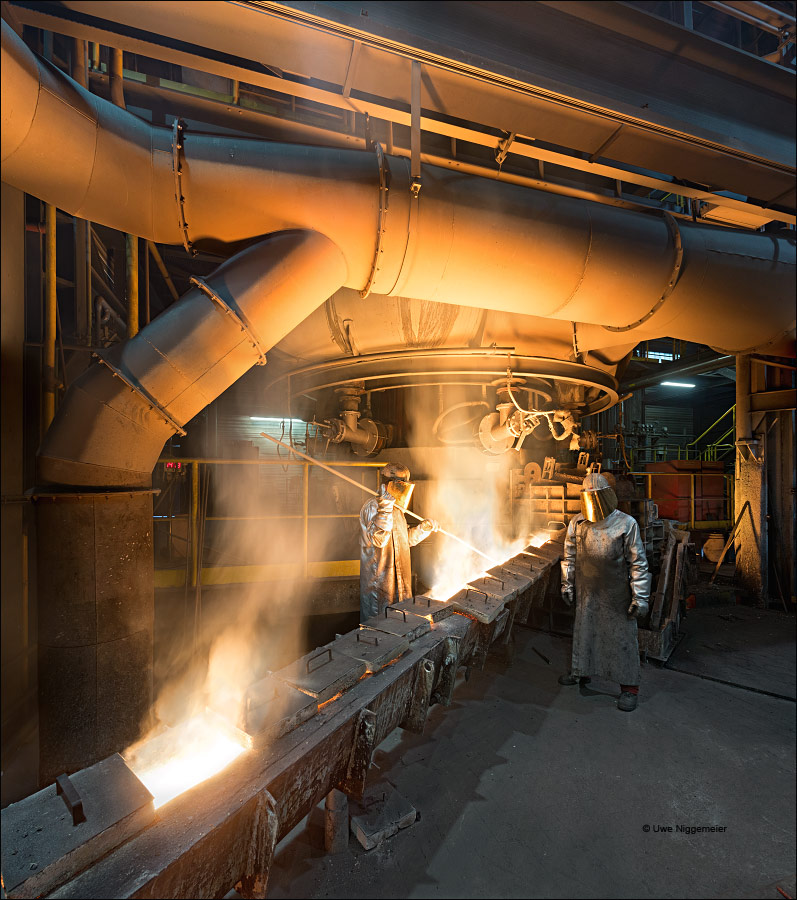
The Walter Hundhausen foundry was established in 1914 in Gevelsberg, Germany.
After WWI the company moved 25 km to Schwerte at the eastern edge of the Ruhr area.
In 1928 the production of black heart malleable castings started.
Heavy truck axle components became a main product after WWII.
Walter Hundhausen was taken over by the Hoesch steel company from Dortmund in 1989 and became part of Krupp Hoesch Automotive four years later. 1993 closure of the branch plant in Werdohl.
In 2000 the Walter Hundhausen iron foundry was taken over by the GMH group from Georgsmarienhütte.
A new large 40t/h cupola furnace replaced the old induction furnaces in 2008. The foundry employes more than 600 people.
Further images at Stahlseite.
Tag Archives: Foundry
Big Cupola IV
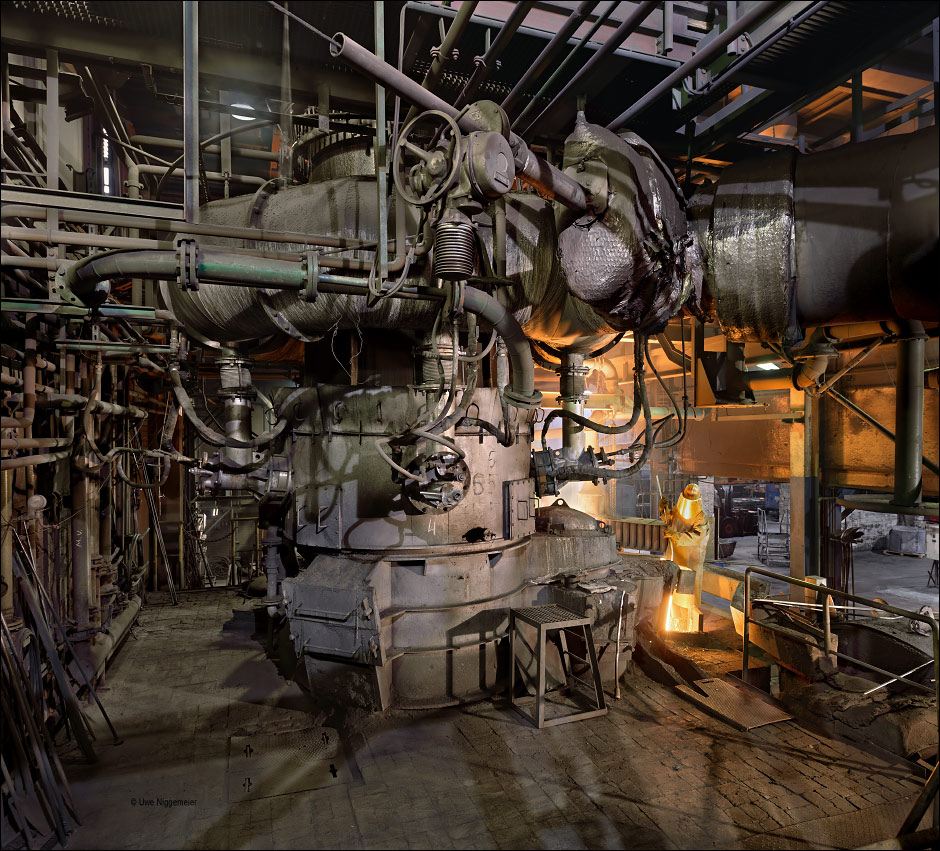
This is the old Carlshütte in Limburg, Germany, better known as Buderus Eisenwerke for more than a century.
The company was founded in 1900 by Carl Schlenck from Nürnberg.
In 1907 the Buderus company took the mill over to produce sewer and drainage castings.
Four cupola furnaces were installed. During world war II. a converter for steel castings was in use.
During the 1950ies and 60ies more than 1200 people were employed.
In 1979 a new hot blast cupola furnace was built.
In 2009 the former Buderus Kanalguss was bought by the MeierGuss group.
Further images.
From Iron To Steel
The iron foundry Eisenwerk Hasenclever was built on ground of the old Auhammer forge in Battenberg, Germany in 1913. Cast iron crankshafts become the main product.
In 2011 the old cupola furnace was replaced by 6 induction furnaces to produce high temperature resistant steel castings.
More images at Stahlseite.
Big Cupola III
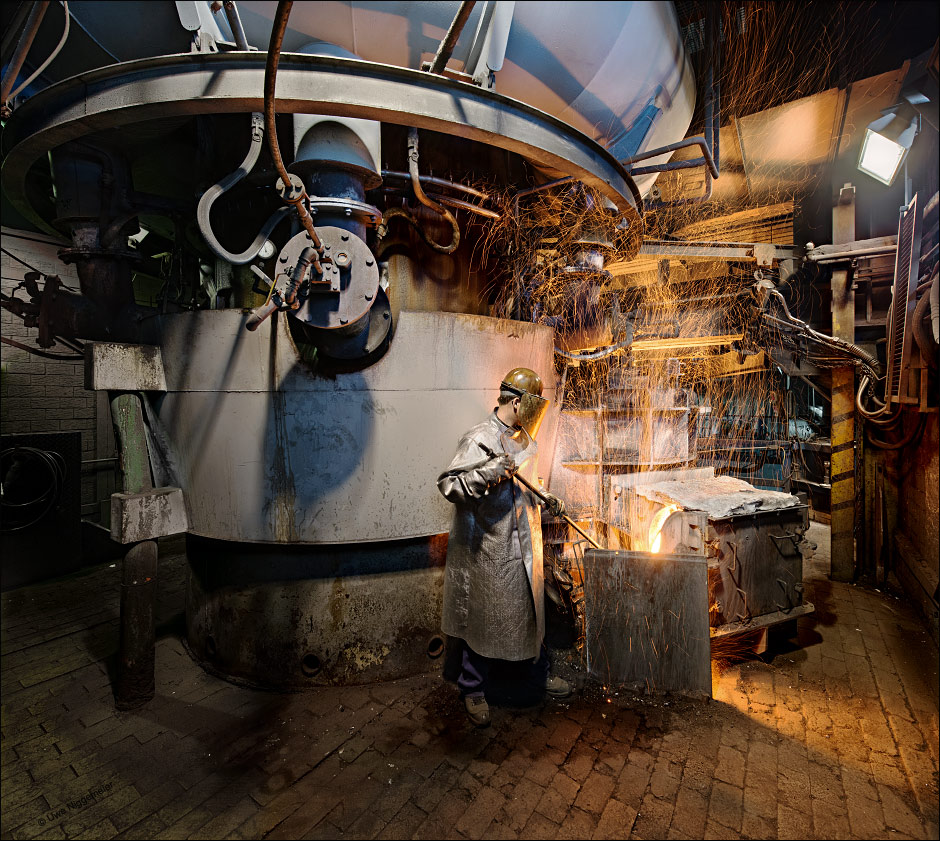
Though not as large as the Fritz Winter furnaces this hot blast cupola still churns out more than 30 tons of cast iron each hour.
Heinrich Meier Eisengiesserei in Rahden, Germany was built in 1960.
In 1987 the new cupola furnace was installed by the Küttner company from Essen.
Main products are manhole covers and drainage systems.
Further viewing.
Zeitzer Guss
The iron foundry Zeitzer Guss runs one of the largest induction furnaces in Germany. Founded in 2007 it is the latest foundry in Germany. It was built on ground of the much older ZEMAG (Zeitzer Eisengießerei und Maschinenbau AG) plant from 1855. Zeitzer Guss produces hand formed castings up to 30 tons a piece.
Further images at Stahlseite.
Big Cupola II
The Fritz Winter iron foundry in Stadtallendorf, Germany operates one of the largest foundry melt shops worldwide. Two hot blast cupola furnaces and ten induction furnaces can melt up to 2800 tons of iron each day.
The company was founded in 1951 on ground of a former explosives factory.
Today the plant is the largest independent foundry in Europe employing 3500 people.
Main product are engine blocks and brake discs for the car industry.
Further images at Stahlseite.
The Last Furnace In Town
My hometown Hagen once was one of the major steel producing communities in Germany.
Blast furnaces,open hearth shops and numerous foundries shaped the confined townscape in the narrow valleys of the Volme and Ennepe rivers.
The largest steel mill, the Hasper Hütte owned by the Klöckner company, was closed in 1972 and the huge Wittmann steel foundry next to it just one year later.
The last major steel producer in town, the open hearth shop of Stahlwerke Südwestfalen was shut down in 1976, smaller ones like the Remy speciality steel mill followed in the 1990ies.
The Eisenwerk Geweke was founded in 1910 and is specialized in steel fittings.
A five ton electric arc furnace and a small induction furnace are producing castings up to four tons a piece.
Further viewing at Stahlseite.
Big Cupola
Eisenwerk Brühl south of Cologne, Germany runs one of the largest cupola furnaces in Europe.
Installed in 1981 it delivers 90 tons of hot metal each hour.
Up to 26000 engine blocks can be casted daily.
The foundry was established in 1927 by Georg and Maria Sandmann.
Right from the start the main products were cast iron engine blocks for the car industry.
It is said that one out of five blocks in the world comes from Brühl.
Further images.
369 Ton Steel Casting
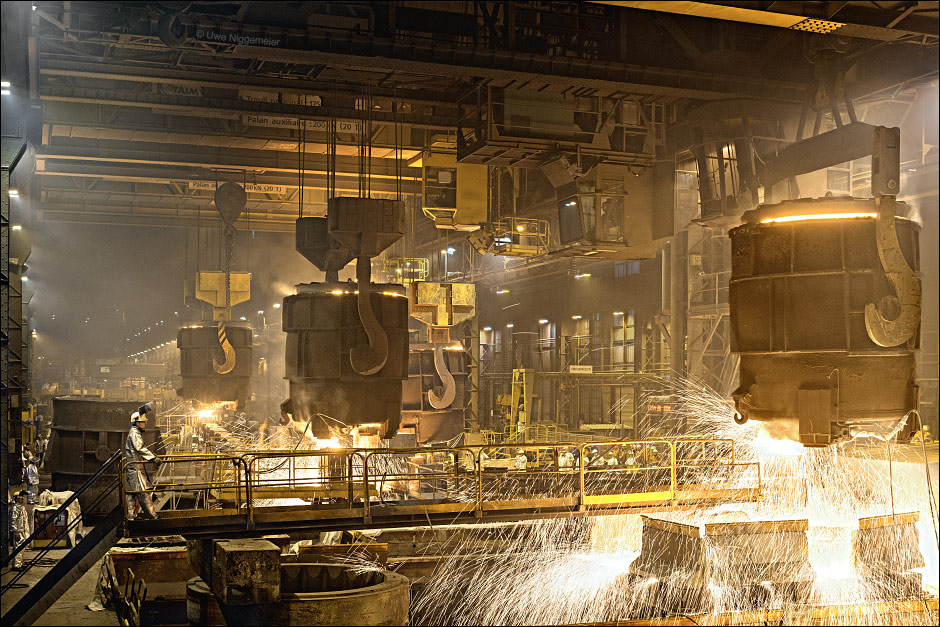
Casting the lower beam of a forging press from four ladles at Industeel in Le Creusot, France.
Further images.
The first iron works the „Royal Foundry“ started production in Le Creusot, France in 1782.
In 1836 Adolphe und Eugène Schneider took over the foundry and made it into the “French Krupp”, a factory producing speciality steels, locomotives, large weapons and machinery.
In 1876 the largest steam hammer worldwide (100 ton) was installed at Schneider & Cie .The first hydraulik press starts production in 1890.
In 1920 more than 20000 people are employed in the mill’s blast furnaces, open hearth shops, rolling mills, forges, foundries and mechanical shops.
Iron production is closed down in 1940.
From 1949 on the mills in Le Creusot are named “Société des Forges et Ateliers du Creusot (SFAC)”.
In 1952 a 7500-ton hydraulic press (a reparation from Germany) was installed.
The first nuclear power plant equipment is produced in 1954.
In 1970 the SFAC joins the “Cie. des Ateliers et Forges de la Loire” to form “Creusot-Loire Industries“.
In 1984 Creusot Loire filed bancruptcy and the steel and rolling mills were taken over by USINOR.In 1998 the Creusot steel activities were merged with the Belgian Fabrique de Fer de Charleroi to form Industeel.
Industeel Le Creusot today runs a 100 ton electric arc furnace, a 4 meter heavy plate mill and a steel foundry.
Industeel is part of ArcelorMittal since 2006.
Grey Iron Casting
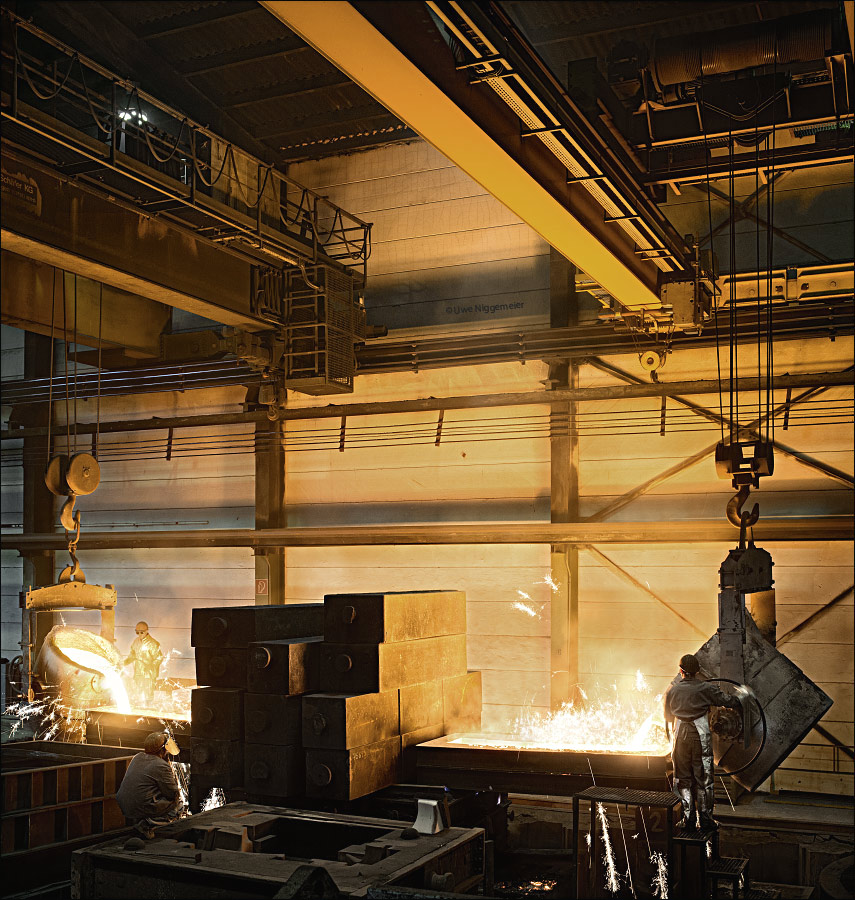
Founded in 1921 the Metallwerk Fritz Kleinken is a medium size foundry on the northern rim of the industrial Ruhr-Area in Germany.
It produces grey iron and nodular iron castings up to 30 tons a piece from two cupola and two induction furnaces.
Fritz Kleinken employes 180 people.
Further images at Stahlseite.

